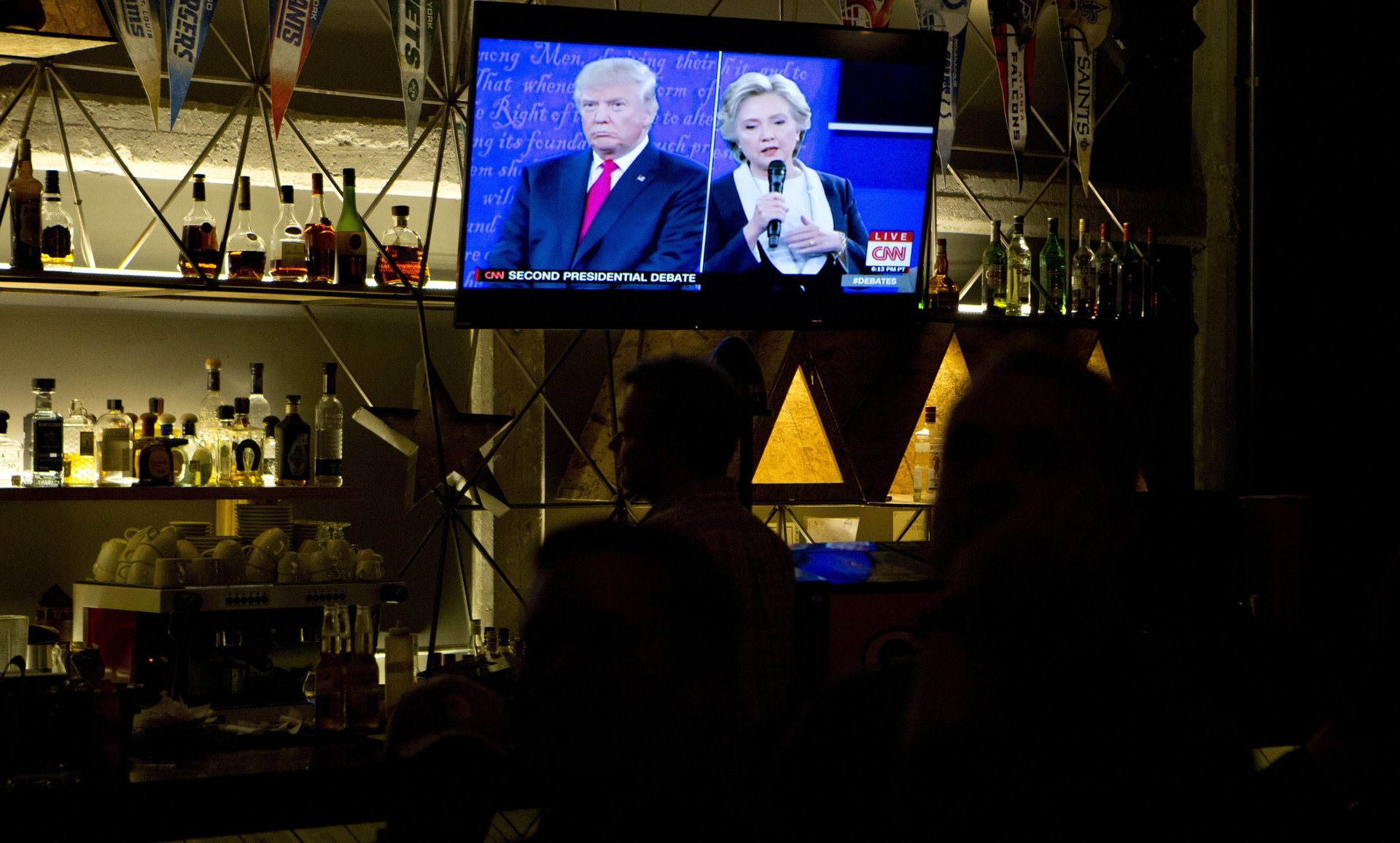The usual last-ditch TV advertising push won’t reach a major chunk of this year’s undecided voters
It’s almost over, America. The US presidential debates have wrapped. And, in two weeks, for better or worse, there will be a new president-elect.


It’s almost over, America. The US presidential debates have wrapped. And, in two weeks, for better or worse, there will be a new president-elect.
There is one last hurdle we have to contend with before we cast our ballots on Election Day: the last haul of the long TV commercial trail that will attempt, for one last time, to sway our votes.
As of Oct. 26, Hillary Clinton’s campaign has booked $22.2 million in political TV ad spending for the final two weeks of the race, while Donald Trump’s campaign booked $30.6 million, Bloomberg reported. That’s a whole lot of commercials, and those spends don’t even include ad buys from super PACs and other groups supporting the candidates.
By comparison, Barack Obama and Mitt Romney’s campaigns bought a combined $45 million worth of commercials set to air during the final nine days of the 2012 presidential race, CNN reported one week before election day that year.
But this time around, many commercials may fall on deaf ears. A recent survey found about 40% of undecided voters spend absolutely no time watching live TV in a given week.
That’s based on a sample of 500 “persuadable” US voters in the swing states of New Hampshire, Florida, Nevada, North Carolina, and Pennsylvania who were polled from Oct. 13 to Oct. 18 by Global Strategy Group, a Democratic firm, and Public Opinion Strategies, a Republican group. Persuadable voters were defined as those who self-identified as undecided in the presidential and/or senate races, or who indicated that they may change their minds ahead of election day.
Nearly 30% of this sample—which cut across age groups—also said they hadn’t watched live TV about the presidential race at any point during this election cycle. On the other hand, 76% of the respondents still watched at least one of the debates live, which suggested that some may be tuning in via live streams, Robert Blizzard at Public Opinion Strategies said. But that won’t help the campaigns reach these undecided viewers, since the debates are over. In addition, commercials have far better odds of being seen when they air live—cord-cutting viewers can fast forward through ad breaks during DVR or on-demand viewing.
So where are these cord-cutters getting their information from?
Well, 52% of people surveyed still turned to TV. But a growing portion—27%, up from 23% in 2012—said they rely on the internet to stay informed on US senate and presidential races. The remaining 21% leaned on several sources for information including family and friends, newspapers, or radio, Blizzard said.
Half of people surveyed also said they went online to fact check things they heard in the media about the election, and another 50% fact checked things they heard from the candidates themselves.
Digital advertising may be the best bet to reach some of these undecided voters in the final days of the presidential race. ”The notion that campaigns are trying to reach these late deciders, and they’re not getting their information from television, is significant,” Julie Hootkin at Global Strategy Group told the New York Times.
Both candidates seem wise to the strategy: Trump’s campaign said in September that it planned to spend $40 million on digital advertising leading up to Election Day, while the Clinton camp planned to spend $30 million.